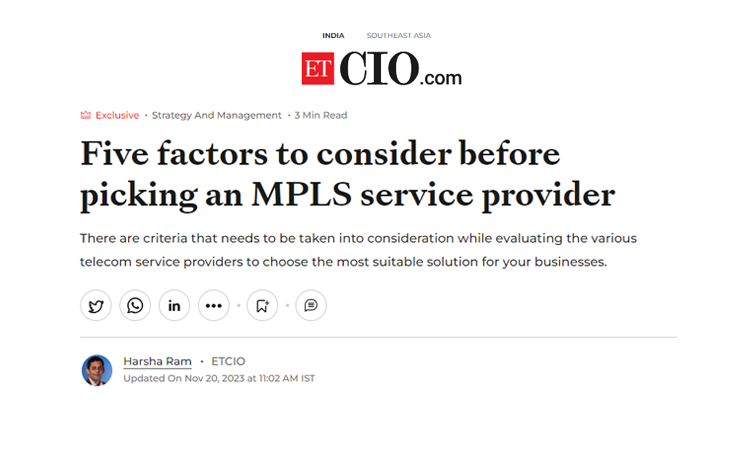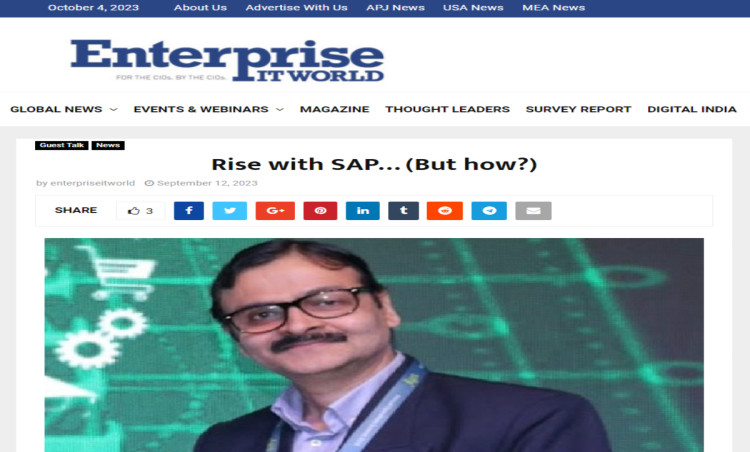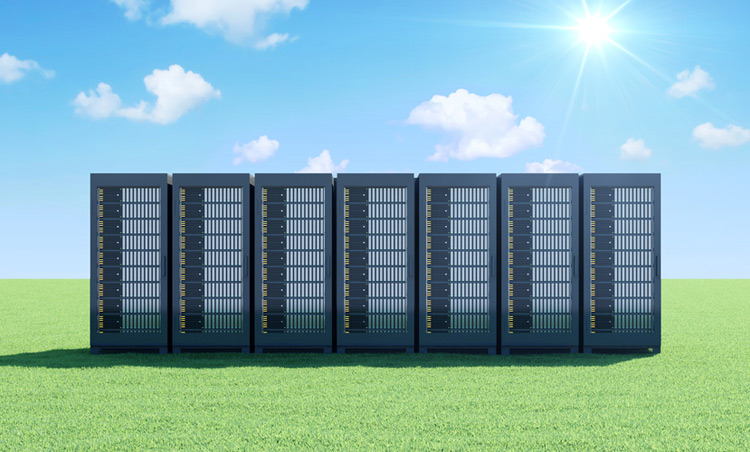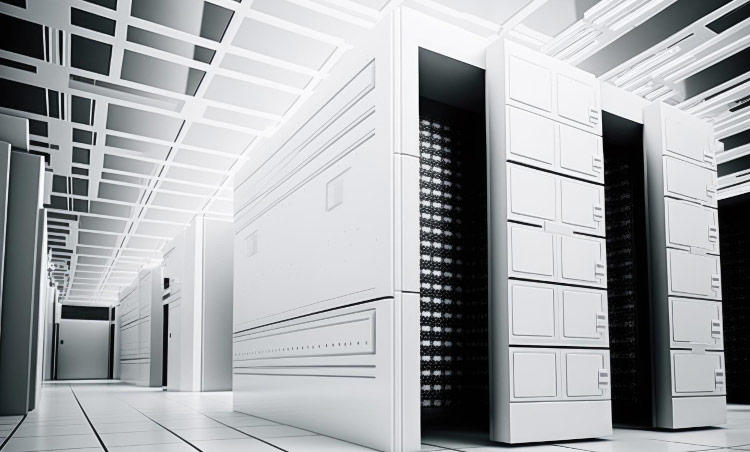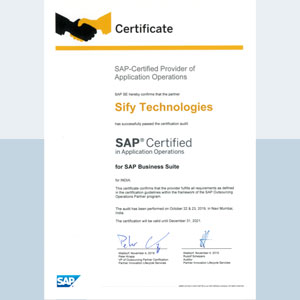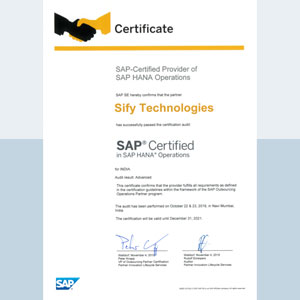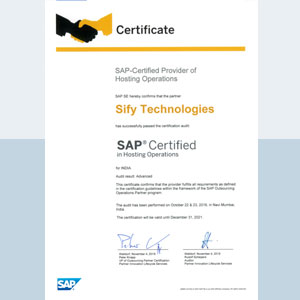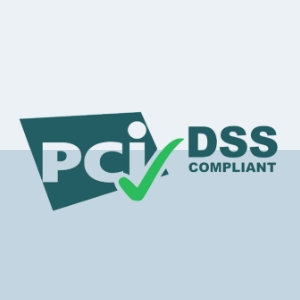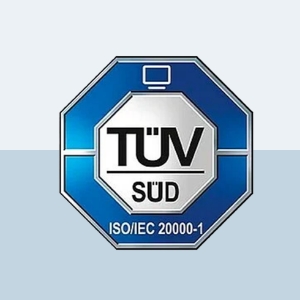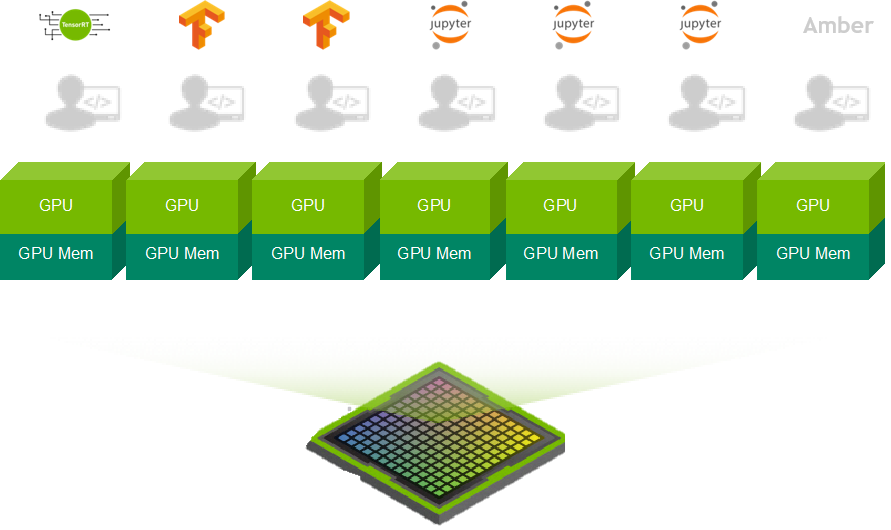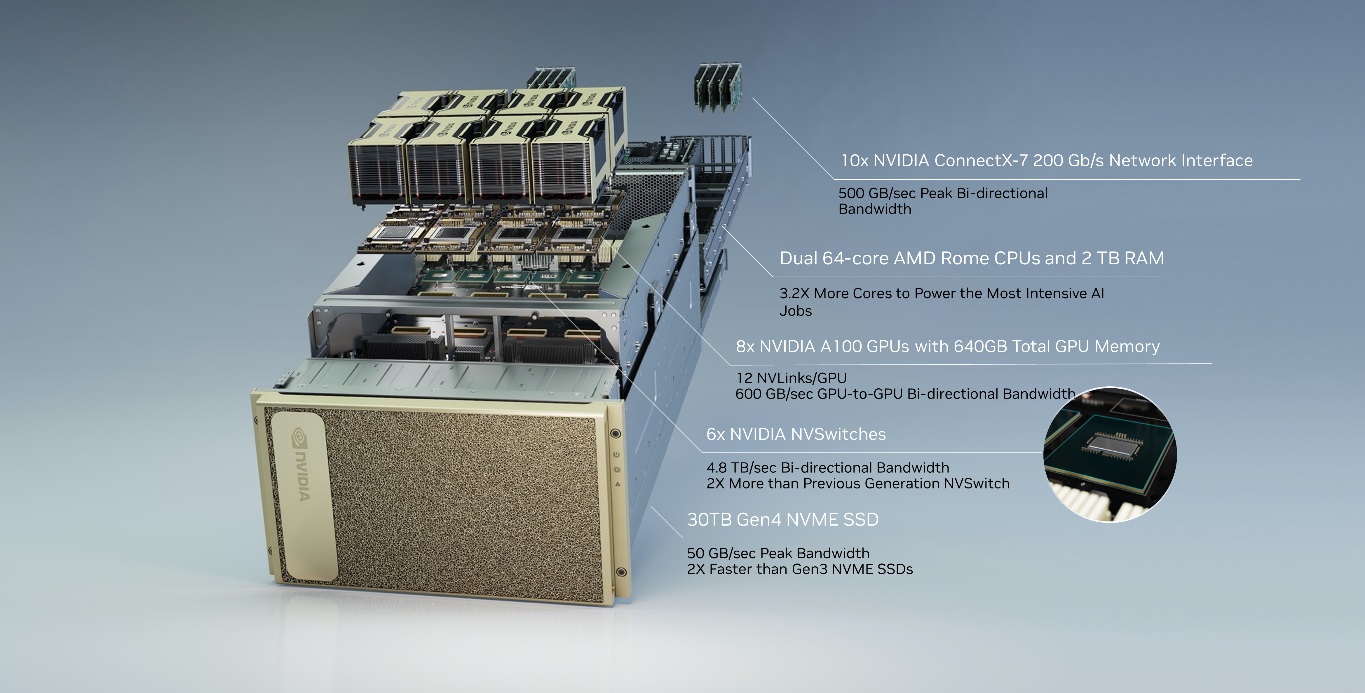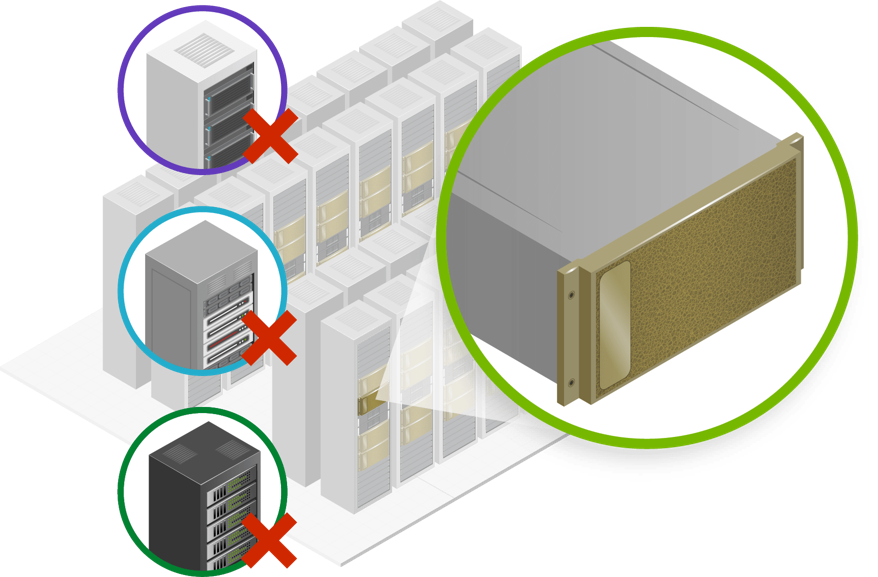Return on Asset Is the New ROI: Maximizing the Value of Your Content
Credits: Published by our strategic partner Tenovos.
We live in a data-driven age, where information is the key to unlocking value.
To make decisions with data, we depend upon metrics. But metrics can be a double-edged sword: choose them wisely, and you can zoom in on growth-accelerating insights. All too often, though, we choose our metrics based on what we usually measure or can measure with our existing tools — not what we should be measuring, or would choose to measure in an ideal world.
One of the biggest offenders in the Digital Asset Management (DAM) universe? Return on Investment, or ROI.
How ROI Gets It Wrong
The theory goes like this: implementing a new DAM system costs time and money. Since your company is in the business of making more than it spends, it’s important to make projections of how much your DAM will save and how much additional revenue it can generate. So you make some educated guesses to sell stakeholders on a DAM project, and try to piece together what the DAM helped with later on.
It’s that last piece that often fails to hit the mark. While it’s easy to know what was spent on a DAM project, it’s a lot harder to find where and how it made a difference. Moreover, the ROI calculation can only prove one thing: whether the DAM project saved money or not. That’s a good start, but … what’s the real purpose of a DAM?
Return On Asset (ROA): A Smarter Metric for a Smarter Era
With Sify DAM platform, we’ve got an answer that goes beyond ROI, to give you more in-depth answers that help you determine strategies and understand your customers, all while illuminating the true value of our platform.
It’s called ROA: Return on Asset.
When you use the Tenovos platform to find the connective tissue that turns your assets into stories, each of those assets can be seen in a new, value-driven light. When you maximize the return on your assets, you maximize your return on investment, too — now with additional insights that enable your growth goals.
With Sify DAM, you can find underperforming and overperforming assets when they’re still in active use to tell stories better and achieve a higher ROA. Dig through the buried treasure of campaigns past with AI-augmented DAM to find what stories resonated with your buyer and how to make lightning strike twice.
Improve ROA for Storytelling Success
The story of digital assets in the 21st century has been one of meteoric growth. More assets are being produced than ever before, with ever-expanding file sizes and project costs. Video strategy is now mission-critical to digital marketing, but producing videos can cost far more per asset than photography or written work.
As budgets tighten and the world braces for more uncertainty, one thing is for sure: the era of throwing assets at the wall and seeing what sticks is over. It’s time to get smart. Enterprises need to know what’s likely to work (and what isn’t) before the project budget is spent and the campaign gets a postmortem.
As your teams all over the world create assets for their individual campaigns, the Tenovos platform illuminates what’s working, including suggestions that connect and unify your story across business units and geographies.
These kinds of connections — created using the same types of technology that power AI recommendation tools from heavy hitters like YouTube and Netflix — are the DAM and the missing link between your current asset management tactics and a unified storytelling strategy.
The Bottom Line: Getting the Return that Matters
The real mark of a good metric is that improving it has a “rising tide” effect: as it rises, it lifts up other metrics that are also good signifiers that your business is doing well.
When it comes to DAM implementations, ROI just isn’t enough. You can raise ROI on a DAM project by decreasing headcount, or by reusing assets, but those cost savings don’t necessarily translate into continued growth.
It’s a metric that is limited in value to ensure that you didn’t lose money — which is why, at the end of the day, most ROI is really all about CYA.
ROA goes further, without losing anything: you can still calculate the value of your DAM implementation, now with a granularity that allows you to iterate and improve on every aspect of your storytelling operation.
Five factors to consider before picking an MPLS service provider
In today’s hyper-connected and fast-paced global marketplace, connectivity is the lifeblood needed to keep businesses running smoothly. Enterprise, small or large, need reliable and fast communication networks to work and grow.
Organizations are given access to a communication network that is entirely dependable, quick, flexible, and cost effective due to MPLS and its “labelling protocol” Businesses are considering shifting to MPLS networks due to the clear advantages of MPLS connectivity, However, choosing an MPLS service provider can be time-consuming and complicated given the industry’s diverse offerings and management methods.
There are criteria that needs to be taken into consideration while evaluating the various telecom service providers to choose the most suitable solution for your businesses.
The first element that businesses need to check is the network coverage offered by the service provider. It is critical to confirm that the network carrier’s service area includes all your targeted locations, and if global connectivity is required, the network service can provide reliable international coverage. Therefore, latency, jitter, resilience, and cost of the MPLS network are all directly impacted by the service providers’ reach and coverage.
The second criteria is to consider the Network Project Management and Monitoring, because complex networks require constant management to run smoothly. Proactive management can result in reduced expense, fewer outages, and enhanced security. Therefore, the specifics of pricing and the range of services offered under the heading of network management and monitoring services must be understood by businesses.
In order to free up IT employees, it is also crucial to check whether the service provider monitors the entire network and provides managed services.
The third criteria to be mindful about while choosing an MPLS service provider is their Network Security. Security capabilities of the MPLS service provider need to be scrutinized closely. Businesses need to ensure that service providers can support and monitor the entire network closely and provide access to a dedicated security infrastructure, including experienced NOC engineers to ensure guaranteed uptime.
Another sure-fire way to assess the capabilities of the service provider is to check the SLAs (Service Level Agreements) offered. While experienced service providers with tested capabilities are usually willing to back their services with SLAs, it pays off to compare SLAs of several MPLS network providers. It is also helpful to look at their existing clients and check references to evaluate their performance.
Subsequent to comparing SLA’s, it is important for businesses to assess, evaluate and understand the Class of Service (CoSs) and Quality of Service (QoS) offered by the carrier. The Quality of Service (QoS) is impacted by the carrier’s consolidation and prioritisation decisions for different traffic categories. These standards must comply with the requirements of your business, and the contract with the service provider must specifically describe and list these service commitments.
While the mentioned points form a base to shortlist the right MPLS network provider, other factors such as routing protocols, staff expertise, 3rd party partnerships, network architecture and future scalability capabilities must also essentially be a part of the decision making process.
Despite the fact that cost is a major consideration in any business decision, your company’s long-term objectives and alignment with current and future needs should ultimately take precedence. After all, your MPLS Network will form the backbone of your business while looking at it from a wider perspective.
Rise with SAP… (But how?)
– An article by Prashant Pimpalekar, covered by Enterprise World
SAP has ramped up a bulk of its resources, innovations and R&D investments to transition SAP Business Suite/ERP customers (i.e. on SAP ECC6.0) to SAP S/4 HANA on Cloud. The campaign it launched worldwide (“Rise with SAP”) has been well-received by its customers and prospects.
While SAP has provided multiple choices for the said transition, it has created some confusion in customers’ minds. Rise with SAP but how? Which way to go? What is the best option suited for my organization?
Instead of directly telling the options available under Rise with SAP (deployment models for S/4 HANA Cloud), this article takes a customer-centric view and provides multiple scenarios of SAP customers/prospects and recommendations for the best-fit possible.
- Yours is a startup raring to go. You want an ERP software which will provide a rich functionality of all the key business processes (right from procure to pay, order to cash, record to report, hire to retire etc.) seamlessly integrated, can accommodate the scorching business growth, would be Cloud-based (and so scalable) with subscription-based pricing giving SLA-bound performance with lowest possible TCO (Total Cost of Ownership). And all this in record time, ready to run! In this case, SAP S/4 HANA Cloud (Public Edition) could be the best option.
- Or, you head a lean organization with SAP ERP ECC6.0 implemented (or you could be on a lower version of S/4 HANA, say 1503, on-premise), say, 6 to 8 years ago. In that long period, your SAP system has been customized on many instances to meet the business requirements on an ad-hoc basis. Due to various reasons, master data quality has not been up to the mark. Customizations done years ago seem to be no more relevant in the changed business scenario of today. Overall, the SAP deployment satisfaction index is not high. Given a chance, you would like to discard the chaotic system and start afresh on a blank slate. But while doing it, you don’t want to lose the rich functionality of integrated and reliable business processes and the comfort of SAP users. Keeping in tune with the changing times, you want to avail the elasticity of Cloud, want to see greenfield Implementation of SAP S/4 HANA in record time with a competitive budget. In this case, SAP S/4 HANA (Public Edition) could be the best option.
- Or, yours is a big organization with SAP ERP ECC6.0 implemented, say, more than a decade ago. Most of the key business processes have been mapped and are being used across many plants, branches spread across the country (or even across many nations). Mirroring the business, the business processes are complex and due customization has been done to cater to local/country-specific requirements. You have maintained relatively high data hygiene in the SAP system and the SAP deployment satisfaction index is pretty good. You can’t afford to lose all that and so can’t think of any greenfield implementation. Your organization also puts much more emphasis on security and so want to go for single-tenant tenancy on Cloud. In that case, Brownfield migration to SAP S/4 HANA Cloud (Private edition with Hyperscaler) could be the best solution. The SAP system/servers could be hosted on one of the hyper-scalers like AWS, MS-Azure or GCP (Google Cloud Platform).
*Brownfield migration- Here you are getting SAP master data, transactions, configured business processes, RICEF objects, balances from SAP ECC6.0 into S/4 HANA (whichever is the target version). No need to create them from scratch (or upload them via batch programs). It also gives you an opportunity to configure new business processes, rectify some old processes, add any enhancements etc. if you perceive a need.
- Or you are a CXO of a very large organization using SAP ERP ECC6.0 say, since more than a decade. Most of the key business processes have been mapped and are being used across many plants, branches spread across the country (or even across many nations). Mirroring the business, the business processes are fairly complex and due customization has been done to cater to local/country-specific requirements. You have maintained relatively high data hygiene in the SAP system and the SAP deployment satisfaction index is pretty good. You can’t afford to lose all that and so can’t think of any greenfield implementation. Besides, your organization works in a highly regulated environment (federal/state/local regulations) like life Sciences / Utility / BFSI putting heavy emphasis on various compliances. So besides opting for single-tenant tenancy on Cloud, you also want the SAP system/servers residing on a designated private data center (like HP, Dell, Lenovo). In that case, Brownfield migration to SAP S/4 HANA Cloud (Private edition – Customer data center) could be the best solution.
Following table captures the essence of above explanation along with some important data points (which could not be covered earlier) which should assist in your decision-making process of S/4 HANA migration.
RISE with SAP Deployment Models for S/4 HANA Cloud –
| Public Edition | Private Edition Hyperscaler | Private Edition Customer Data Center | |
|---|---|---|---|
| Business driver | Ready to run | Tailored to fit | Data sovereignty/residency, performance, security, portability |
| Service offering | SaaS (SAP) | IaaS & PaaS (SAP) | IaaS (HP/Dell/Lenovo) & PaaS (SAP) |
| Migration type | Greenfield only | Greenfield or Brownfield | Greenfield or Brownfield |
| Licensing model | Subscription- Cloud ERP | Subscription- Cloud ERP | Subscription- Cloud ERP |
| SAP SLA % | 99.7% | 99.7% | 99.7% |
| Tenancy | Multi-tenant | Single-tenant | Single-tenant |
| Max scale up RAM | 6 TB | 24 TB | 24 TB (with HP), 12 TB (with Lenovo), 6 TB (with Dell) |
| IaaS data center location | SAP’s choice | Choice of public cloud data centers | IaaS (with customer data center choice) |
| Infrastructure host | AWS, Azure, GCP, SAP | AWS, Azure, GCP | HP, Dell, Lenovo |
| Cloud deployment | Public cloud | Public cloud | Private cloud |
| Data management and storage | Shared | Shared | Dedicated |
| Customization | No | Yes | Yes |
| SAP source code changes | No source code changes No IMG access | Yes | Yes |
| Upgrade flexibility | No (Compulsory 2 upgrades/releases every year) | Yes (customers can choose when to upgrade) | Yes (customers can choose when to upgrade) |
| Integration with SAP PO (Process Orchestration) | Not possible | Yes | Yes |
Conclusion –
Scenarios explained above need to be taken with a pinch of salt. It is highly possible that even a large organization may discard their current SAP system and may go for greenfield implementation, or a unicorn startup may go for Private edition (Hyperscaler). It all depends on N parameters (some of which are discussed above), budget, timeline expectations etc. So, while there is no one-size-fits-all nor is any solution right or wrong, this article should assist the CXOs in deciding which way to go for SAP S/4 HANA migration.
Check out the full feature here
Choosing the right Managed Wi-Fi provider- Key Considerations
In today’s hyper-connected world, a stable and efficient Wi-Fi network is essential for enterprises to operate seamlessly. A robust and dependable Wi-Fi network is the foundation of success for any thriving business, facilitating seamless employee communication and offering a platform for engaging with customers.
Managed Wi-Fi providers offer a range of services, designed to make your Wi-Fi network hassle-free and optimized for performance. But how to choose the right managed Wi-Fi provider? In this article, we will explore the key factors you must evaluate when making this decision.
Understanding your core requirements
Before beginning your search for a managed Wi-Fi provider, it is crucial to understand your core requirements. It might depend on your business type, size, number of devices connecting to network, bandwidth & coverage needs, security demands, compliance, and more. Here is a list of essential features and services your potential managed Wi-Fi provider must offer.
- Performance
The foundation of successful business operations is a stable and high-performance Wi-Fi network. When evaluating managed Wi-Fi providers, prioritize reliability and speed. Downtime or slow connectivity can disrupt operations and negatively impact potential lead interactions. Ensure the provider can offer Service Level Agreements (SLAs) with guaranteed uptime and performance levels that meet your business needs.
- Scalability
One of the most critical considerations when choosing a managed Wi-Fi provider is scalability. Your network needs may change over time as your business grows or usage patterns evolve. Look out for a partner that can accommodate scaling up or down without significant disruptions. Ask potential providers about their scalability options and whether they can adapt to your future requirements.
- Reliability and Redundancy
A reliable Wi-Fi network is a non-negotiable requirement for businesses. Downtime can lead to lost revenue, frustrated customers, and decreased productivity. When evaluating managed Wi-Fi providers, inquire about their network reliability and redundancy measures. Look for providers with a track record of minimal downtime and robust failover solutions to ensure uninterrupted service.
- Security
Cybersecurity threats are constantly evolving, and your network must be protected from potential breaches and attacks. Make sure your provider offers robust security measures such as firewall protection, intrusion detection, and encryption. Additionally, inquire about their approach to security updates and patches to stay ahead of emerging threats.
- Quality of Service (QoS)
Different devices on your network may require varying levels of bandwidth and priority. For example, video conferencing and voice-over-IP (VoIP) calls demand low latency and consistent bandwidth. A managed Wi-Fi provider that offers Quality of Service (QoS) allows you to prioritize traffic according to your needs, ensuring a seamless user experience for critical applications.
- Network Management and Monitoring
Effective management and monitoring are essential for maintaining a healthy Wi-Fi network. Your managed Wi-Fi provider should offer robust tools and platforms that allows you to monitor network performance, troubleshoot issues, and make necessary adjustments. Look for providers that provide real-time visibility into your network’s status and offer proactive support to address potential problems before they impact users.
- Support and Service Level Agreements (SLAs)
Consider the level of support your managed Wi-Fi provider offers. What are their service level agreements (SLAs)? Do they provide 24/7 customer support? Can they respond quickly to network issues? Clear communication and reliable support are crucial, especially during network emergencies. Ensure that provider support offerings align with your business needs and expectations.
- Cost and Pricing Structure
Cost is undoubtedly a significant factor when choosing a managed Wi-Fi provider. Some providers might charge based on the number of devices connected, while others may have data usage-based pricing. Make sure you are aware of any potential hidden fees or overage charges and choose a pricing model that aligns with your usage patterns.
- Compatibility and Integration
Consider your existing technology infrastructure when selecting a managed Wi-Fi provider. Will the provider’s solution seamlessly integrate with your current systems, such as point-of-sale (POS) systems, security cameras, or other IoT devices? Compatibility and integration capabilities can significantly impact the efficiency and effectiveness of your network.
- Reputation and Reviews
Finally, research the reputation and customer reviews of potential managed Wi-Fi providers. Online reviews and testimonials from current clients can provide valuable insights into a provider’s performance, customer service, and overall satisfaction. Additionally, inquire about case studies or references to gain a deeper understanding of how the provider has helped businesses similar to yours.
Sify Edge Connect: One-stop Solution for your Managed Wi-Fi needs
Sify Edge Connect is a comprehensive suite of services involving Edge connect Advisory and Implementation services combined with wireless management and intelligent edge analytics. It is a fully managed secure wireless platform that integrates IT, OT, and people. Edge Connect offers a seamless expansion of its core services to edge devices while delivering centralized management for streamlined operations, infrastructure near the end-user for reduced latency, and expert management of policies for data protection.
A few salient features of Sify’s Edge Connect are:
- Cloud-based centralized management platform
- Controlled Internet access to guest users with GIS mapping
- Highly scalable and resilient
- Pan India deployment & support
- Service-based model with end-to-end ownership
Wrapping Up!
Choosing the right managed Wi-Fi provider is crucial decision that can impact your business efficiency, security, and customer satisfaction. By carefully understanding above factors, you can make an informed choice that aligns with your specific needs and goals. A well-chosen managed Wi-Fi provider will ensure a reliable wireless network and empowers you to focus on what matters most while growing your business and serving your customers.
Boost your network edge for all-round digital transformation with Sify’s Edge Connect now!
The future of enterprise networking: Exploring the benefits of SD-WAN
The conversation around networking solutions has reached a critical juncture, and software-defined wide area networks (SD-WAN) have become central to this discourse. The SD-WAN market is projected to reach USD 13.7 billion by 2027, growing at a compounded rate of 31.9% annually. As enterprises demand agile, built-for-purpose, future-ready, cost-effective, and secure networking solutions, SD-WAN represents a preferable alternative to the limitations of traditional networking solutions. This article delves into the transformative business benefits of SD-WAN, its advantages over traditional WAN technologies, and why enterprises must take immediate notice.
What is SD-WAN and how has it evolved?
Consider this scenario: A retail chain with stores in multiple cities, each running different promotions, handling distinct inventory, and serving diverse customer needs. How do they ensure that all of their branches communicate efficiently with the headquarters and with each other? How do they safeguard sensitive data that is exchanged over their network?
SD-WAN emerges as a game-changing solution in these contexts. It leverages software-defined networking (SDN) to establish a more agile and responsive network ecosystem. It dynamically optimizes WAN performance, delivering an exceptional user experience.
Traditional WAN vs. SD-WAN
Traditional WAN architectures offer robust stability, compatibility with legacy systems, and regulatory compliance. Through high-quality connections like MPLS, they guarantee performance where it is critical. Being a widely adopted technology, many organizations have the in-house expertise to manage them efficiently. On the other hand, they are known for their rigidity and inefficiency, often requiring a lot of manual configurations. The lack of centralized management is also a major drawback. All of this results in higher costs, poor performance and lack of scalability.
SD-WAN revolutionizes this space by offering significant WAN optimization. SD-WAN shines in its ability to offer agile, cost-effective, and scalable networking solutions with centralized management. Leveraging software-defined networking, it optimizes traffic routes, prioritizing essential applications for enhanced performance and reliability. Additionally, built-in security features, such as end-to-end encryption, fortify the network, making it an alternative to traditional WAN technologies.
Organizations adopting SD-WAN can expect to reduce networking costs while significantly improving their bandwidth. Its fast, reliable, and secure network can handle any unprecedented surge in users. Centralized management and better visibility keep diverse locations connected efficiently.
Sify’s Managed SD-WAN: Features and benefits
Sify, a recognized niche player in the Gartner Global Managed Services Magic Quadrant, offers a cutting-edge managed SD-WAN platform, developed in collaboration with top OEMs. Sify SD-WAN helps enterprises to meet the evolving network requirements with unmatched agility, security, and scale.
- Improved performance:
Superior application steering, intelligent routing and application prioritization result in accelerated performance, reduced latency, and enhanced user experience.
- Cost savings:
SD-WAN brings down hardware costs and optimizes bandwidth and network assets utilization, helping to derive the best long-term ROI.
- Simplified management:
Centralized control, policy management and automation simplify network management, reducing manual configurations and enabling efficient scaling. Management dashboards offer granular views based on business intent.
- Enhanced security:
SD-WAN security benefits include bolstered overall network security, encrypted traffic and secure connections for remote offices.
- Application awareness:
SD-WAN excels in application-aware dynamic bandwidth allocation, particularly useful in high-demand scenarios. Pre-configured SD-WAN policies can immediately identify and prioritize latency-sensitive traffic to ensure there is no degradation in quality.
- Automatic failover:
SD-WAN’s intelligent algorithms detect congestion or failure on the primary connection, and they automatically switch traffic to a secondary connection, ensuring uninterrupted user experience.
For more insights into a best-practices-driven SD-WAN implementation, click here to learn how Sify’s SD-WAN services combine robust performance with cost-effectiveness.
Emerging trends: The future of SD-WAN
SD-WAN as-a-Service: Managed SD-WAN deployments are growing rapidly, with more enterprises choosing to outsource WAN management to specialized service providers. By 2020, this number had risen to nearly 50%, from just 8% of deployments in 2017. There has been a noticeable shift towards offering SD-WAN as-a-service, with businesses able to adopt this technology without hefty upfront investments.
SD-WAN and Secure Access Service Edge (SASE): When integrated into a SASE framework, SD-WAN benefits from an additional layer of security, which makes policy-based, secure access to network resources efficient and highly secure. For example, SD-WAN enhances secure remote access by providing encrypted pathways between remote locations and central networks. To add to this point, the focus on zero-trust security models further boosts SD-WAN’s credentials as a secure networking solution, by ensuring that all traffic is verified before access to the network is granted.
SD-WAN and Cloud: Traditional WAN architectures often struggle to efficiently route cloud-bound traffic, leading to suboptimal performance and potential security risks. SD-WAN dynamically routes traffic based on application type, quality of service requirements, and network conditions. It can identify the most efficient path to a particular cloud service and optimize the route for performance, reliability, and security. Furthermore, SD-WAN solutions often have native integrations with major cloud service providers. Such “cloud on-ramp” capabilities empower SD-WAN for rapid and secure cloud access.
SD-WAN and AI: AI-driven automation is enhancing SD-WAN by enabling smarter traffic management and improved security through anomaly detection. By integrating AI and machine learning, SD-WAN becomes capable of intelligent network optimization and predictive analytics. A unified approach (often enabled by a single management console) consolidates heterogeneous networks and traffic onto a single platform for easier management and also serves as a rich source of network and security data.
SD-WAN and the Edge: SD-WAN enables near-real-time data processing and analysis at the source, reducing latency and boosting application performance. Its dynamic traffic routing capabilities also enhance efficient data handling at distributed edge locations, allowing organizations to deliver timely insights and actions.
Conclusion: Key considerations for implementing SD-WAN
SD-WAN will play a pivotal role in the next wave of digital transformation. Organizations that are considering the switch should begin by assessing their needs and choose an SD-WAN solution or a service provider who can offer the full suite of capabilities suited to these needs.
Sify delivers a managed SD-WAN platform that enables the network agility and security needed by the modern-day enterprise. Sify’s SD-WAN platform supports customers’ network needs across a multi-service provider and multi-media environment. Learn how you can empower your network with our SD-WAN services. Learn more
Exploring India’s Potential as a Preferred Hyperscale Data Center Destination
The Indian data center market has witnessed phenomenal growth in recent years, driven by the increasing adoption of digitalization, internet penetration, e-commerce and cloud computing. Due to accelerated adoption of public cloud and data sovereignty policies, major global players are investing heavily in hyper-scale facilities, turning the nation into a hyperscale data center hub to meet the increasing demand of cloud services.
According to a report, the data center industry in India to cross 1.3 GW capacity and grow 2.4x by 2024. The hyperscale market is expected to grow 20% from 2021 to 2026, with over 300 new hyperscale sites in development globally today, that number is expected to surpass 1,000 by end of 2024.
Hyperscale Data Center Colocation Providers in India are Revolutionizing Data Center Infrastructure:
Having a data center in India has its own benefits. Several prominent data center providers have already made significant investments in data centers that offer massive colocaation facilities, capable of housing high-performing servers and storage systems, providing immense computing power, storage capacity, and scalability. These data centers cater to all the needs of Public Cloud providers, global Enterprises, and OTT players, who require massive infrastructure to support their digital services and handle the exponential growth of data.
Let’s explore the reasons why India is an attractive destination for hyperscale Data Centers
- Vast market size and growing digital economy
The proliferation of data generation at edge, vast market size with favorable business environment, and India’s rapidly expanding digital economy, fuelled by the government’s Digital India initiative is making India- one of the main data centers destinations in the world. Policies aimed at data localization and data sovereignty has incentivized both domestic and international CSPs to establish hyperscale data centers in India to comply with these regulations.
- Increased adoption of cloud services in India
The increase in cloud services adoption in India reflects a broader trend of digitalization and technology-driven innovation. As organizations continue to realize the benefits of cloud computing, India is poised to play a pivotal role in the global cloud services landscape.
Cloud-born startups and automation-dependent businesses are defining the growth and scale of data center services. For instance, hybrid cloud adoption is enabling digital enterprises to leverage private infrastructure for compliance, sensitive workloads, greater control on the applications and environment, and tap into the high computing power of public clouds for bursting or scaling requirements, enabling digital innovation, and easier access to next-gen technologies like AI/ML, thus accommodating evolving business needs.
- Scalable data center campuses with growth options for up to 10 years
Scalability is one of the top challenges that hyperscalers and enterprises face as the demands on their technology systems increases. To help customers data processing seamlessly, hyperscale companies need exceptional storage, capacity, and flexibility to match their internal data processing requirements.
Hyperscale-ready data centers facilities in India are designed to become agile to cater the growing demand and meet any load they service. By setting up new availability zones set up and built-to-suit capabilities, most data center providers offer growth options for up to 10 years, enabling faster time to market in a cost-effective manner.
Sify’s data center in Rabale, Mumbai is an expandable mega data center campus designed for 10 towers, with 5 of them fully operational. The large campus has a 200 MW IT power capacity with up to 15,000+ racks. The remaining towers are in development and planning phase to favor hyperscale and retail clients’ dynamic workloads.
- Dense interconnect networks
The availability of dense interconnect networks has played a significant role in contributing to the growth of data centers in India. Hyperscale data center providers help businesses seamlessly connect to public clouds through high speed, low latency network while ensuring enhanced quality of services (QoS), secured information exchange, and guaranteed performance.
- Ample Stable power
The rapid growth of data center usage results in a growth of energy needs of the facility. Hyperscalers look for locations with access to stable and redundant power infrastructure, including multiple power grids, reliable electrical connections, and backup generators. India hosts several locations across its geographical reach that offers ample power and the capacity to scale up as hyperscalers’ operations expand. Data center providers assess the availability of power grids, transmission lines, and substations in the vicinity to attract and meet hyperscalers core requirements.
- Abundant Renewable Energy Potential
India offers substantial renewable energy potential, including solar and wind power. The country’s focus on renewable energy development aligns with the sustainability goals of hyperscale data center operators which is to make themselves carbon-neutral, making India an attractive choice for establishing environmentally friendly data centers. Most data center service providers in India are investing in green practices to meet the sustainability guidelines.
Sify data centers are green and energy-efficient data centers with 200+ MW of renewable power contracted. Additional nation-wide Green power for upcoming Data Center facilities is underway. With a reduction in carbon footprint by 28% during 2021-22, Sify ensures implementation of innovative practices to achieve low PUE (ASHRAE guidelines) and low WUE (Green Grid guidelines). It is a significant commitment to dedicated solar and wind renewable investment.
- Skilled Workforce and Technological Expertise
India has a large pool of skilled Data Center professionals with deep Subject matter expertise in electrical, mechanical and Data Center design as well as operations. India has traditionally been strong in developing IT professionals, with a strong foundation in software development, network engineering, and data management. This talent pool is critical for operating and managing hyperscale data centers. The presence of a thriving IT services industry further contributes to the availability of skilled personnel with the necessary expertise.
- Cost Advantages
India offers several cost advantages in terms of real estate, labor, and operational expenses compared to other established data center destinations. Lower land and construction costs, competitive energy prices, and ease of business driven by government support and diverse favoring policies contribute to the cost-effectiveness of establishing hyperscale data centers in India.
- Strategic Geographical Location
India’s geographic location provides a strategic advantage for international organizations seeking to expand their data center footprint. Its proximity to emerging markets in the Asia-Pacific region, the Middle East, and Africa makes India an ideal hub for serving these markets with low-latency connectivity. Hyperscale computing companies in India can act as gateways to these regions, facilitating faster data transmission and ensuring enhanced user experience.
The Mumbai subsea cable landing station serves as a key entry point for international internet traffic and facilitates high-speed connectivity to and from India. It supports global data communication and is vital for businesses and enterprises requiring robust international connectivity.
Chennai’s location along the Bay of Bengal makes it an ideal location for subsea cable landing stations. It serves as a critical gateway for international data traffic, enabling data transfer between India and other parts of the world. This connectivity is crucial for businesses, content delivery networks, and cloud service providers operating in India.
Sify data centers in Mumbai, Chennai, Noida (Delhi-NCR), Hyderabad, Kolkata, and Bangalore are strategically positioned to meet the unique needs of businesses and organizations in these expanding regions. They play a critical role in supporting government initiatives, digital transformation efforts, technological innovation, and data-driven operations.
Wrapping up!
India possesses numerous attributes that make it an attractive data center powerhouse. The country has witnessed massive infrastructure investments in the past years from International and domestic companies who recognized the potential of India as a strategic location to establish their hyperscale infrastructure. Keeping these investments and key factors in consideration, it can be assumed that in the future, the hyperscalers will invest more in India while focusing on the sustainability standards.
As India’s first commercial data center provider, Sify encompasses an extensive infrastructure with 11 DCs PAN India with 100 MW capacity. Additionally, with an aim to add 350 MW to their infrastructure by 2025, Sify will capture a large portion of the market hosting a mix of hyperscalers and retail clients.
Know more about Sify Hyperscale data centers here!!
Unlocking the Power of Managed Wi-Fi: How it is Transforming Business Network
In today’s fast-paced and interconnected world, businesses rely heavily on their network infrastructure to ensure seamless communication, data transfer, and access to critical resources. From enabling seamless communication among employees to providing a platform for customer engagement, a strong and reliable Wi-Fi network acts as the backbone of any successful business.
According to a report, the global Wi-Fi market is expected to reach a market evaluation of $31.3 billion by 2027 at a CAGR of 20.4% for the forecasted period 2022-2027. However, as businesses continue to evolve, managing and maintaining Wi-Fi networks can become increasingly complex and time-consuming.
To bridge this gap and unlock the true potential of networking, Edge Connect, commonly known as Managed Wi-Fi services has emerged as a transformative solution. In this blog, we will explore the power of Managed Wi-Fi, how it is transforming business networks, and how Sify drives business success with advanced managed network solutions.
Understanding Managed Wi-Fi: A Paradigm Shift in Networking
Edge Connect, commonly known as Managed Wi-Fi represents a paradigm shift in networking, moving away from traditional centralized data centers to a decentralized, distributed architecture. At its core, Edge Connect leverages edge computing and networking principles to bring processing power and data storage closer to the end users and devices.
By reducing the distance between users and the network resources they need, Edge Connect minimizes latency, enhances performance, and improves overall network efficiency. Over the years, Managed Wi-Fi services have gained significant traction due to the increasing reliance on wireless connectivity in businesses of all sizes.
Currently, enterprises prefer to entrust the management of Wi-Fi infrastructure to professional providers like Sify, who offer end-to-end services, including installation, monitoring, troubleshooting, and security updates. By delegating these tasks to experts, businesses can focus on their core operations and enjoy the benefits of a robust and scalable Wi-Fi network.
Transformative Impact on Business Networks
- Enhanced Network Performance
Speed is of the essence! One of the primary advantages of Managed Wi-Fi services is the assurance of enhanced network performance. The service providers deploy state-of-the-art access points strategically to ensure optimal coverage throughout the business premises.
It eliminates any dead zones and delivers a seamless Wi-Fi experience for employees and customers. Sify offers ubiquitous wireless coverage, actively monitors network traffic, and makes real-time adjustments to ensure optimal performance, low latency, and minimal delay in processing and delivery time.
- Robust Network Security
Network Security is of paramount importance for businesses operating in the digital realm. Managed Wi-Fi distributed architecture mitigates risks by keeping critical data close to the source. The Managed Wi-Fi service providers offer advanced security features to safeguard the network from potential breaches and threats.
Sify implements robust encryption protocols, firewalls, and intrusion detection systems to protect sensitive data and prevent unauthorized access. Additionally, with regular audits and security upgrades, Sify is always one step ahead of potential vulnerabilities.
- Scalability and Flexibility
Businesses today need flexible and scalable solutions that can adapt to their dynamic requirements. Managed Wi-Fi services excel in this aspect by offering easy scalability features. Additional edge nodes can be seamlessly integrated wherever needed, expanding the network’s capacity without causing disruptions.
Additionally, Managed Wi-Fi services are adaptable to different network configurations, enabling enterprises to tailor their networks to meet dynamic needs. Sify designs the best-fit solution based on the enterprise’s current architecture and future needs to accommodate fluctuations in network usage with dynamic seasonal demands or growth spurts.
- Improved Reliability and Optimized Content Delivery
Content delivery is critical for digital businesses, especially for media streaming, e-commerce, and cloud-based applications. With Managed Wi-Fi services, businesses can achieve higher network reliability and uptime. Since data is processed and cached at the edge, users can continue accessing content and services even if there are disruptions in the centralized data centers or the internet backbone.
- Enabling IoT and Industry 4.0
The rise of the Internet of Things and Industry 4.0 has brought about a massive influx of connected smart devices and sensors. Managed Wi-Fi services play a pivotal role in handling the vast amounts of data generated by these devices, enabling real-time analysis, seamless communication, and data exchanges at the edge.
- Guest Wi-Fi Management
For businesses that welcome guests, providing a seamless and secure Wi-Fi experience is crucial. Managed Wi-Fi services offer guest WiFi management features, allowing businesses to create custom splash pages, set usage limits, and gather valuable data on customer behavior. This data can be leveraged to tailor marketing strategies and enhance customer engagement.
Sify offers controlled internet access and OTP- based authentication to guests that can be categorized into different user sets. For instance, VIPs, guests, and doctors for an enterprise in the healthcare industry.
- Cost Effectiveness
Initially, investing in Managed Wi-Fi services might seem like an added expense to enterprises. However, in the long run, it can prove to be cost-effective. With experts managing the Wi-Fi structure, businesses can save on hiring dedicated IT personnel. Additionally, the near-zero downtime, improved productivity, and enhanced customer experience contribute to the overall cost savings.
Sify’s service-based model with end-to-end ownership brings the entire platform as a service. A fully managed, secure wireless platform that integrates Integration Technology (IT), Operational Technology (OT), and People.
Applications Across Industries
Managed Wi-Fi Service’s transformative impact extends to a wide range of industries:
- Healthcare: In telemedicine and remote patient monitoring, where real-time communication is crucial, Managed Wi-Fi ensures low-latency and reliable connections for seamless interactions between patients and healthcare professionals.
- Retail: For e-commerce platforms, Managed Wi-Fi optimizes content delivery, ensuring faster loading times for product pages and reducing cart abandonment rates.
- Manufacturing: In smart factories, Managed Wi-Fi supports real-time monitoring of machinery and equipment, enabling predictive maintenance and reducing downtime.
- Transportation: In the automotive industry, Managed Wi-Fi facilitates vehicle-to-vehicle (V2V) and vehicle-to-infrastructure (V2I) communication, enhancing road safety and enabling autonomous driving capabilities.
- Gaming: For online gaming platforms, Managed Wi-Fi reduces latency, enabling a more immersive and responsive gaming experience for players worldwide.
- Smart Cities: In the context of smart cities, Managed Wi-Fi supports various applications, such as smart traffic management, public safety monitoring, and efficient waste management.
Wrapping up!
Over the years, Managed Wi-Fi services have emerged as a game-changer in the world of business networking seeking to unlock new possibilities for enhanced performance, reliability, and scalability. As technologies and demand for secure network architecture continue to evolve, Managed Wi-Fi services are poised to shape the future of business networking and drive innovation across industries.
By entrusting Wi-Fi management to specialized providers like Sify, businesses can leverage the flexible and secure network infrastructure that is transforming the ways users interact with the digital world.
Visit us to know more about Sify’s Edge Connect now!
Sustainable Green Data Centers: How to Build Green IT Infrastructures
The rapid growth of enterprise data centers in India has led to an increasing focus on the concept of green data centers. Many businesses are now opting for alternative energy solutions for their data centers, as they offer numerous benefits. One key advantage is energy savings, which leads to cost reductions for businesses. Green data centers also contribute to environmental sustainability by reducing carbon emissions and optimizing the use of natural resources.
Comparing India’s data statistics to global figures as of 2021, India represents 18% of the global population but has lower Internet penetration, e-commerce shopping, social media users, and mobile subscribers, all at 14%. However, India’s total mobile data traffic is significant at 113 EB, and total media traffic is 588 EB. Currently, there are 138 operational data centers in India, utilizing 737 MW power. Over the next 3-4 years, an additional 50 data centers are expected to be established, resulting in a power demand of 1050 MW. In the next 7 years, the data center consumption is projected to exceed 3000 MW of IT load demand.
This level of enormous upcoming “data center capacity” has resulted in a significant increase in the volume of energy consumption by data centers, which can have a lasting impact on the environment, and finally result in climate change.
To solve this issue, the concept of sustainable data centers has come out to reduce the environmental impact of data centers while still meeting the growing demand for digital services. As per the Green Data Center Global Market Report 2023, the global green data center market is expected to grow to $139.93 billion in 2027 at a CAGR of 19.6% for the forecasted period 2023-2027.
With this, let’s deep dive into understanding sustainable data centers, advantages of green data centers, and how to build sustainable data centers.
What Are Sustainable Data Centers?
Simply put, a sustainable data center or a green energy data center is designed and operated with a focus on environmental and social sustainability.
- Sustainability in data centers involves the implementation of a variety of practices, such as the use of renewable sources of energy like solar or wind power.
- Green data centers also help optimize energy use through efficient cooling and lighting systems, reducing water usage, and utilizing eco-friendly building materials and technologies. Green data centers also help in promoting responsible waste management practices.
Sustainable data centers strive to balance their operational needs with environmental responsibility, making significant efforts to reduce energy consumption, greenhouse gas emissions, and water usage while promoting the adoption of renewable energy sources.
Advantages of Green Data Centers
Eco-friendly data centers are crucial for reducing the environmental impact of the IT industry in India. Building sustainable data centers demonstrates a company’s commitment to sustainability and corporate social responsibility. Here are a few benefits of Green Data Centers:
- Energy Efficiency: Green data centers employ various technologies and practices to optimize energy usage. They use energy-efficient servers, cooling systems, and power distribution mechanisms, reducing overall electricity consumption and carbon emissions.
- Reduced Carbon Footprint: Green data centers emit fewer greenhouse gases compared to traditional data centers. By adopting sustainable practices, they help combat climate change and contribute to global efforts to reduce carbon emissions.
- Renewable Energy Integration: Many green data centers rely on renewable energy sources such as solar, wind, hydroelectric, or geothermal power. By harnessing clean energy, these centers decrease their reliance on fossil fuels and contribute to a lower carbon footprint.
- Compliance With Environmental Regulations: Green data center solutions help companies comply with stringent government regulations aimed at reducing carbon emissions and promoting sustainability.
- Cost Savings: Green energy data centers offer economic advantages by reducing energy costs and improving overall efficiency. Through energy efficiency and the use of renewable energy sources, green data centers can significantly lower operational costs. Over time, these savings can be substantial and may offset the initial investment in green technologies.
- Enhanced Corporate Social Responsibility (CSR): Companies that invest in green data centers demonstrate their commitment to sustainability and environmental responsibility. This can boost their reputation and appeal to environmentally conscious customers and partners.
- Longer Equipment Lifespan: Green data centers often prioritize the use of high-quality, energy-efficient hardware. This can lead to longer lifespans for servers and other equipment, reducing electronic waste and the need for frequent replacements.
- Resilience and Disaster Recovery: Most green data centers are built with redundancy and resilience in mind, reducing the risk of data loss during power outages or other emergencies. This ensures critical data remains accessible and secure.
- Leadership and Competitive Advantage: By adopting green practices, companies can position themselves as industry leaders in sustainability. This can lead to a competitive advantage as customers and investors increasingly prioritize environmentally responsible organizations.
How to Build Sustainable Data Centers?
To build sustainable data centers, companies must adopt a range of proven strategies and technologies that minimize their IT infrastructure’s environmental impact, maximize energy efficiency, and reduce carbon emissions.
- Upgrade to New Equipment: While regular maintenance and repairs can improve equipment functionality, over time, equipment becomes less reliable and more expensive to maintain. Hence, data center companies must invest in good-quality, cost-friendly data center equipment, procured from a reputed vendor. It is more advantageous in the long run to avoid the costly risk of data center downtime caused by aging and faulty equipment.
- Optimize Energy Efficiency: The first step in optimizing energy efficiency is to choose energy-efficient hardware. Proper hardware and software configuration, such as implementing power management features, is also essential for optimizing energy efficiency. Data centers must accurately measure the consumption of energy in real time and create timely alerts to keep a check on energy usage, in order to optimize energy efficiency. Identifying alternate sources of energy also helps in optimizing energy efficiency.
- Intelligent Power Management: Managing power prudently can help optimize power usage and increase energy efficiency. Through intelligent power management, predictive analytics, and efficient data center infrastructure management, a data center can maximize resource utilization, minimize energy waste, and enhance overall sustainability. Intelligent monitoring, control, and allocation of power resources within a data center infrastructure can help boost the recovery time of devices that are managed remotely.
- Virtualization: Virtualization allows multiple virtual servers to run on a single physical server in a data center, which helps to optimize energy efficiency and reduce the environmental impact of multiple physical data centers. This not only improves data center resiliency but also makes a data center more sustainable.
- Using Renewable Energy Sources: Another way to reduce carbon emissions and improve sustainability is incorporating renewable energy sources into data center operations. It can involve various mechanisms like installing solar panels, wind turbines, or hydroelectric generators. Data centers can also invest in off-site renewable energy projects, such as wind or solar farms, that can offset their energy consumption.
- Modern Cooling Systems: Several strategies to improve cooling efficiency include using free cooling systems that use outside air to cool a data center instead of traditional air conditioning. Another option is liquid cooling, which uses a liquid coolant to directly cool server components. Installing efficient airflow management mechanisms improves the effectiveness of cooling systems and reduce energy usage. Optimizing airflow is a great way to ensure sustainability and reduce operational costs in data centers.
- Implementing Automation: Automated power management tools can optimize system settings for maximum energy efficiency. Several practices, such as turning off unused devices or putting servers into low-power states during periods of low usage, can improve energy efficiency. Sustainable data centers use software-based smart design principles to optimize energy efficiency and reduce environmental impact.
- Conduct Regular Energy Audits: Regularly monitoring and assessing energy usage and carbon emissions is essential for identifying areas for improvement and ensuring data centers remain as energy efficient as possible. Conducting energy audits can provide deeper insights into energy usage patterns, identify areas for improvement, and help prioritize energy-saving initiatives.
Meeting Data Center Sustainability KPIs
Measuring and monitoring sustainability performance through Key Performance Indicators (KPIs) is essential for data centers to assess their environmental impact, measure progress, and undergo continuous improvement. Some of these KPIs include:
- Power Usage Effectiveness (PUE)
- Water Usage Effectiveness (WUE)
- Carbon Usage Effectiveness (CUE)
- Server Utilization
- Recycling and Waste Management
- Greenhouse Gas Emissions
- Compliance with Sustainability Standards
Going Green With Sify Data Centers
With over two decades of thought leadership in IT infrastructure, Sify has been delivering transformative business value to enterprises across the globe. Sify provides carbon-neutral and energy-efficient data centers by incorporating renewable energy sources, optimizing power utilization, offsetting carbon emissions, and automation through AI/ML. While ensuring sustainability, we offer high-efficiency equipment that complies with green practices like adhering to ASHRAE guidelines, implementing a carbon abatement policy, and ISO 14001 Environmental Certification.
In 2022, Sify Technologies made a commitment to renewable energy for its data center business in India. We have made power purchase agreements (PPAs) with Vibrant Energy Holdings, a majority-owned subsidiary of Blue Leaf Energy Asia Pte. Ltd. Having contracted over 200 MW of green power, Sify is successfully making progress in reducing its customers Power Usage Effectiveness (PUE) and Water Usage Effectiveness (WUE)
Wrapping up!
To build a zero-carbon data center, one must follow a holistic approach that considers the entire lifecycle of the data center, right from the design and construction to ongoing operations and maintenance. By implementing a range of strategies and technologies that optimize energy efficiency and reduce carbon emissions, data center operators can build green IT infrastructures that are environmentally friendly and economically sustainable.
Learn more about Sify green data centers now!
Edge Computing : 5 Problems it Solves for Enterprises
In the current digital landscape, enterprises are battling with a plethora of challenges posed by explosive growth of data and the need for real-time responsiveness at edge. Traditional cloud computing architectures are struggling to keep up with the demands of modern businesses. It has pushed enterprises to constantly lookout for innovative solutions that can help enhance their operations and gain a competitive edge.
This has led to the rise of Edge Computing, a paradigm that brings computation and datastorage closer to the source of data generation, enabling processing at faster speed and higher volumes. By decentralizing processing power and reducing latency, edge computing addresses several critical challenges faced by enterprises today. As per Statista, the global edge computing market is expected to reach 12 billion US dollars by 2028 at a CAGR of 23.97% from 2020-2028.
In this blog, we will delve into the 5 fundamental challenges that it solves for enterprises, helps revolutionize their capabilities, and how it paves the way for an efficient and agile future.
5 problems Edge Computing can solve for Enterprises.
- Latency and real time processing
In the era of immediate access to information, reducing latency and achieving real-time responsiveness has become paramount for businesses. In traditional cloud architectures, data must travel from the edge devices to the centralized cloud servers, causing delays in processing and response times. Edge computing addresses this challenge by moving computational resources closer to the edge devices, thereby minimizing latency. By processing data locally at the edge, businesses can achieve near real-time analysis and decision-making, enabling time-sensitive applications like IoT, industrial automation systems to operate with lightning-fast speed and minimal delay.
For instance, retail environments with video surveillance of the showroom floor can be combined with actual sales data to discover consumer demands or most desirable product configurations. Similarly, in the healthcare sector, IoT devices enable healthcare professionals to be more watchful and connect with patients proactively. By sharing real-time data collected from IoT devices, physicians can help analyze and identify patients’ health issues. - Bandwidth optimization with Edge analytics
With the explosion of connected devices and the exponential growth of data generation, bandwidth has become a valuable and often limited resource. Transmitting all data to the cloud for processing and analysis can strain network infrastructure, result in increased costs, and lead to suboptimal network performance. Edge computing offers a solution by performing data processing and filtering at the edge devices themselves.
By deploying servers and storage at the source of data generation, edge computing makes latency and congestion virtually non-existent as storage collects and processes the raw data, while local servers implement edge analytics to pre-process it before sending to the cloud. So, instead of sending raw data to the cloud, only relevant information or actionable insights are transmitted, significantly reducing bandwidth consumption. This optimization not only saves costs but also enhances overall network efficiency, allowing enterprises to make the most of their available resources. - Enhanced Data security
Security and privacy are critical concerns for enterprises, especially when dealing with sensitive data. Centralized cloud architectures present potential vulnerabilities, as data must traverse the network, making it susceptible to interception or attacks. Edge computing, on the other hand, distributes data processing and storage closer to the source, reducing the attack surface. By processing data locally, sensitive information can be kept within the enterprise’s network perimeter, minimizing the risk of unauthorized access and data breaches.
Any data traversing the network back to the data center or cloud can be secured using encryption techniques. This decentralized approach enhances security and provides enterprises with greater control over data privacy, mitigating potential risks associated with storing and transmitting sensitive information. Additionally, it improves reliability and protects users’ privacy as well. - Scalability and cost efficiency
Edge computing minimizes the capital outlay and operating expenses. Centralized cloud architectures often face limitations when it comes scaling resources to meet evolving requirements. With edge computing, scalability is inherently built into modern architecture. The distributed infrastructure allows enterprises to easily scale their computing power by adding or removing edge devices as needed. Whether it’s adding new edge servers, edge nodes, or gateways, enterprises can dynamically scale their computing resources and distribute the computational load across a network of edge devices to handle increasing workloads or accommodate fluctuations in demand.
Edge computing offers several cost-saving benefits. First, by reducing the amount of data required to be transmitted to cloud servers. Second, by minimizing data storage costs as it’s stored and processed locally. Additionally, edge computing reduces the need for extensive network infrastructure upgrades as enterprises can make use of existing local network connections. Lastly, by offloading processing tasks to edge devices, enterprises can minimize their dependency on high-cost centralized cloud resources. This enables them to allocate resources more efficiently and avoid the need for overprovisioning, leading to cost savings. - Governance and Compliance
Enterprises operating in heavily regulated industries, such as healthcare and finance, face stringent compliance requirements regarding data storage and processing. Storing and processing sensitive data in public cloud environments can raise concerns about compliance with data protection regulations. For instance, data sovereignty law such as European Union’s GDPR defines how data should be stored, processed, and exposed.
Edge computing offers a viable solution by allowing enterprises to process sensitive data locally. By keeping critical data within their own infrastructure, organizations can ensure compliance with regulatory requirements and maintain better control over their data. This level of control and adherence to regulatory standards helps mitigate compliance risks, enabling enterprises to navigate complex legal frameworks more effectively.
Wrapping up!
As users continue to generate an ocean of data, edge computing works as a most efficient solution for enterprises. By embracing edge computing, enterprises have the opportunity to optimize resource allocation, improve system performance, and unlock new opportunities for innovation, efficiency, and competitive advantage in the ever-evolving digital landscape. However, when searching for the right partner, make sure to engage with a trusted partner like Sify with deep industry expertise, proven hybrid/multi cloud platform, automation capabilities through AI/ML, and a comprehensive portfolio of services designed to accelerate performance, increase scalability, and strengthen security in your edge deployments.
The Benefits of Colocation Data Center Management for Enterprises
Data centers have evolved into becoming a crucial component of the digital IT infrastructure of many global enterprises today. The demand for data center services in India is experiencing remarkable growth as enterprises aim to deliver superior customer experience, accelerate innovation, and become digitally enabled.
According to 6Wresearch, the data center market in India is expected to grow at a CAGR of 10.7% during 2021-2027. This growth can be attributed to key drivers such as the Indian government’s push towards digitalization, increasing Internet penetration, data sovereignty, accelerated cloud adoption, increasing usage of IoT, and the rollout of 5G. Similarly, according to GlobeNewswire, the value of the data center market in India is expected to rise to $10.09 billion by 2027 at a (CAGR) of 15.07% in the period of 2022 to 2027.
Managing a data center in India is getting more intricate by the day in today’s digital landscape. Enterprises find managing data centers to be complex and time-consuming. They need professional expertise, substantial budgets, and excellence in IT infrastructure execution to manage data centers. To meet the evolving digital demands and ensure business continuity, enterprises are now resorting to colocation, i.e. outsourcing of data center management to professional service providers. This delivers cost savings and a range of benefits, including access to subject matter experts, improved operational efficiency, agility, scalability, risk mitigation, enhanced security, and compliance with industry regulations.
Advantages of colocation of data center management
Here are a few advantages of colocation of data center management for enterprises:
- Cost Savings: Building and maintaining a data center requires significant capital investment and operational expenses. By leveraging the model of colocation of data center management, enterprises can transfer these costs to a service provider that has already invested in infrastructure, equipment, and personnel. This empowers enterprises to free up capital that can be redirected toward other strategic initiatives. Additionally, it can help businesses avoid losses incurred from downtime and data breaches in the long run. Moreover, colocation positively impacts Water Usage Effectiveness (WUE) and Power Usage Effectiveness (PUE) by promoting improved energy efficiency. Utilizing the capabilities of Artificial Intelligence and Machine Learning, data centers can experience savings of up to 8% to 10% on PUE. This not only contributes to environmental sustainability but also helps enterprises meet their energy efficiency goals while maintaining optimal performance and increased savings.
- On-demand Scalability: When a business grows, its IT requirements change significantly and may require additional space, computing power, and capacity. Colocation enables enterprises to easily scale up or down as per requirement without incurring additional capital expenses or disrupting their business operations. Data Center service providers can quickly deploy new servers, storage, and network infrastructure or adjust existing configurations to meet changing business needs.
- Automation and AI/ML: Implementation of AI/ML requires careful consideration across multiple parameters. Providers of colocation data center management services can handle large volumes of data, integrate with existing solutions, and enable predictive maintenance, which ultimately helps enterprises gain deeper insights for faster decision-making, automating processes, and delivering increased efficiency & security.
- Access to Subject Matter Experts (SMEs): Colocation of data center management gives enterprises access to subject matter experts who possess specialized knowledge and experience in data center operations. They come with skills, guidance, solutions, and recommendations that can help enterprises optimize performance and minimize risks as well as free up internal resources for performing core business operations.
- Enhanced Data Security: Data security has always been a major priority for enterprises. With data dispersed across multiple touchpoints in a hybrid work model, enterprises need a multi-layer security framework. Service providers ensure comprehensive security measures across the physical security of a DC and the data hosted across on-premise, colocation, or edge to cloud. Specialized service providers come with the expertise and systems to meet industry regulations, protect sensitive data, and minimize compliance risks. Enterprises must make sure that service providers offer:
- A designated Security Operation Center (SOC) to ensure robust and resilient security
- Faster intrusion detection and prevention through multiple protocols
- Data backup and recovery in different seismic zones
- Compliance with the latest data privacy regulations and industry standards
- Adherence to Service-Level Agreements (SLAs): By adhering to the pre-defined SLAs, enterprises can enjoy benefits such as improving operational excellence, accountability, performance monitoring, risk mitigation, and cost optimization. SLAs also ensure service providers deliver the expected quality of service, provide regular reports and establish procedures for addressing issues and non-compliance penalties, which benefit enterprises.
- Improved Reliability and Business Continuity: Colocation enables enterprises to improve reliability and business continuity through specialized expertise, scalability, planning, and improved security measures. Enterprises can leverage the experience of service providers, scale resources efficiently, and solve issues proactively. This ensures there are no disruptions in business operations.
- Constant Technological Advancement: The colocation of data center management provides enterprises with constant technological advancement, including cloud on ramp capabilities. Service providers offer expertise in emerging technologies, regular infrastructure upgrades, access to cutting-edge technology, flexibility, and smooth integration through private direct connections to the cloud. It allows enterprises to be resilient and future-ready without compromising on technology and connecting their on-premises infrastructure to cloud computing systems.
Evaluate your data center needs to make the right choice
When an enterprise identifies a service provider for data center management services, it must evaluate its options based on its unique business objectives and digital priorities. Enterprises must go beyond the basic minimum criteria and focus on key differentiating factors. They must choose a service provider that focuses on:
- Cloud vision and strategy
- Hyperscale partnerships
- End-to-end managed services across multi/hybrid cloud environments
- Interconnect services to other sites and partner ecosystems
Colocation of data center management can be a valuable strategy for enterprises looking to maximize their IT resources and stay competitive in today’s rapidly-advancing digital landscape.
Sify Technologies has been providing reliable and robust data center services for the last 22 years, with a razor-sharp focus on innovation and new technologies. With the objective of delivering delightful experiences, enhanced efficiency, and desired outcomes to our customers, we have equipped all our data centers in India with automation through AI/ML capabilities. This has resulted in creating a sustainable ecosystem of connected data centers. We offer enterprises benefits such as zero downtime, reduced capital expenditure and operational expenditure, and around-the-clock support through our bankable digital data center infrastructure. Our efforts have delivered up to 20% improvement in the turnaround time to deliver critical projects.
What’s more! We also help enterprises realize up to 300 person-hour savings every month by automating customer billing. Our predictive approach to maintenance helps enterprises realize up to 20% reduction in MTBF, up to 10% improved MTTR, and up to 10% reduction in potential downtime. We comply with all the global standards and policies to prevent enterprises from penalties due to non-compliance.
Learn how our state-of-the-art data centers enable enterprises to achieve their desired business goals.





